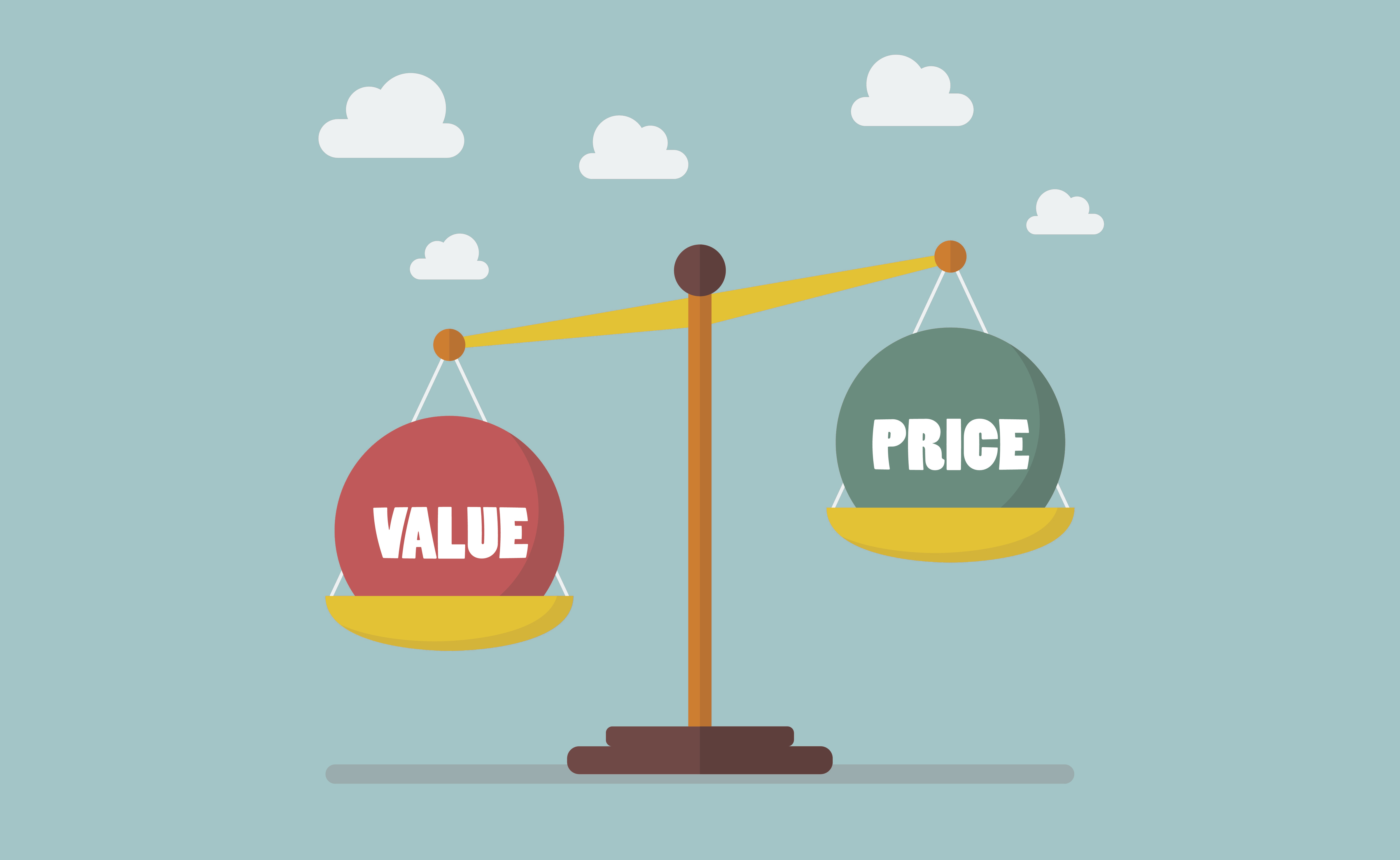Architizer's new image-heavy daily newsletter, The Plug, is easy on the eyes, giving readers a quick jolt of inspiration to supercharge their days. Plug in to the latest design discussions by subscribing.
Value engineering (VE) is a familiar term with a bad reputation. Many architects associate it with dashed hopes of high design, diluting their creative vision and transforming it from the inspirational to the pragmatic. For building-product manufacturers, the cost can be even greater: It may be the difference between a huge commission and a major missed opportunity.
Fear not, though: Value engineering can have a positive outcome. When practiced correctly, it can lead to economically efficient design without compromising on quality or performance. What’s more, building-product manufacturers can play an active role in reaching this goal. This guide is designed to help brands view value engineering through a new lens, approach it with increased preparedness, and even make it a core part of your business strategy.
What is value engineering?
The Society of American Value Engineers International (SAVE International) defines value engineering as a “function-oriented, systematic, team approach to provide value in a product, system, or service.” When it comes to architecture, this means aiming for the most cost-effective building that fulfills its functional requirements.
Perhaps the most well-known methodology for VE was developed by American engineer Lawrence Miles, who worked for the General Electric Company. Miles was in charge of finding raw materials for the company, and realized that if he was unable to obtain a particular material, he needed to find a replacement that would perform the same function at no additional cost.
According to the Designing Buildings Wiki, the process for value engineering boils down to the following six steps, regardless of industry or specialist sector:
- Identifying the main elements of a product, service or project.
- Analyzing the functions of those elements.
- Developing alternative solutions for delivering those functions.
- Assessing the alternative solutions.
- Allocating costs to the alternative solutions.
- Developing in more detail the alternatives with the highest likelihood of success.
To make the correct decisions when it comes to each of the above steps, it is important for all parties involved to keep Miles’ simple equation in mind:
Value = Function/Cost
in which:
Function = the specific work that a design/item must perform.
Cost = the life-cycle cost of the product.
Value = the most cost-effective way to reliably accomplish a function that will meet the user’s needs, desires and expectations.

Via iStock; credit: siraanamwong
For architects, ensuring that function remains top of mind during the value engineering process should mean that mere cost cutting is avoided. Miles offered some “results accelerators”, universal best practices for value engineering that anyone involved in the process is advised to follow. Most of these remain applicable to the design and construction process today:
- Avoid generalities.
- Get all available costs.
- Use information from the best source.
- Blast, create and refine.
- Be creative.
- Identify and overcome road blocks.
- Use industry experts.
- Price key tolerances.
- Use standard products.
- Use (and pay for) expert advice.
- Use specialist processes.
The good news for building-product manufacturers is that they can play a key role in a number of these practices. They can provide multiple price options, help the architect identify and overcome design road blocks, and offer expert technical advice, among others. The following section goes into more detail about how manufacturers can leverage their expertise to decrease the chance of their product being switched out of a project.
How can manufacturers avoid being value engineered out?
While value engineering can be beneficial to an architect’s client and their contractor, it is never good from the perspective of a manufacturer whose product is being substituted. There are a few key steps that a manufacturer can follow to reduce the chances of becoming a victim of VE, as outlined in our previous article “How to Avoid Being Value Engineered Out of a Project”. Four key steps brands can take are as follows:
1. Understand the project needs.
Work on gaining a deep understanding of the architect’s needs in terms of performance, project life cycle and required compatibility with other building-products. This will allow you to recommend the best possible solution for their needs from a functional perspective, reducing the likelihood of value engineering further down the line.
2. Be a key player in the specification process.
According to the AIA, manufacturers are the second-most-relied-upon influencers in the specification process after architects; take advantage by offering your services. By helping to define the key performance criteria, operating costs and maintenance requirements, you can ensure your product aligns with the specifications on all of these factors, providing the architect with an optimized solution.
3. Start the conversation early.
Wherever possible, representatives should aim to engage with architects and help consult on project specifications throughout the early stages, from concept design to technical design. Be proactive — bring up the issue of value engineering before it has occurred, explaining its potential benefits and risks. By being transparent, architects and engineers are more likely to heed advice when you …
4. Highlight the consequences of selecting substitutions.
If after taking all of these steps, it still appears likely that your product is going to be value engineered out of the project, make sure that every party understands the consequences of that decision. Remind architects under pressure from thrifty contractors that specification is not just about basic performance — qualities pertaining to long-term maintenance requirements and energy efficiency are also crucial when calculating the lifetime costs for a project.

Via iStock; credit: siraanamwong
How can manufacturers benefit from value engineering?
It’s worth remembering that, when it comes to value engineering, there is a flip side. Oftentimes, the process involves the substitution rather than the subtraction of a building-product from the final construction. In this scenario, for every manufacturer that misses out, another gains a sale.
How can your brand be the one whose product is brought into a project rather than the one that is replaced? Paradoxically, the same information that you use to reduce the chance of your product being value engineered out can help you become the beneficiary of that same process.
Be on hand to provide architects with key information at crucial moments during design development. Your insights may ultimately mean your product is called upon to fulfill a value engineering goal. The following factors could lead architects to select your product over that of another brand:
1. Economy of scale
If a client’s project increases significantly in scope, an opportunity could arise for manufacturers of materials that are more cost-effective when made in large quantities. As long as it can deliver the same aesthetic quality and required performance, your product may be preferred for its lower cost-per-unit when ordered in bulk. Inform the architect early on in the design process of this economy of scale — it could land you a major commission further down the line.
2. Evolving environmental requirements
Architects are always looking for products that can help a building achieve LEED certification without busting their client’s budget. If they find that a previously specified product is actually more energy efficient than the minimum required, they make seek a more cost-effective alternative. As a manufacturer, if you can provide multiple options for different environmental levels, your product may be drafted in to achieve optimal performance.
3. Design standardization
Oftentimes, an architect is faced with a client that wants a unique building but doesn’t have the budget for a bespoke design. While the initial project might contain proprietary elements, an architect may seek a more cost-efficient solution in the form of standardized components. As a manufacturer, if you can offer off-the-shelf products that achieve equivalent results at a lower cost, you may be able to offer a solution.

Via iStock; credit: siraanamwong
The good and the bad of value engineering
Value engineering is one of the most devisive processes in the construction industry, causing countless headaches throughout the offices of both architects and manufacturers for decades. It is representative of the perpetual tug of war between quality and cost inherent within the design of every building.
It is important to remember, though, that the process has earned a bad reputation not because it is bad in itself, but because it is often carried out in the wrong way. Every time function is sacrificed to lower construction costs, VE is viewed in a more negative light. In fact, the opposite can be true:
Good value engineering is synonymous with good design.
When undertaken in a methodical, rigorous and creative manner, it can lead to beautiful, economical architecture. For manufacturers, the goal should be to play a key role in that positive outcome by offering expert advice and honest insights into the suitability of their products in each scenario. Even if this means your building-product ends up a victim of value engineering for one project, it could be the beneficiary in the next.
Ultimately, building-product manufacturers should look to lead the value engineering conversation, rather than allowing it to unfold without their input. Your technical expertise puts you in a strong position to guide and inform other parties during this process. Leverage your brand’s strengths, and you can start to view value engineering in a whole new light.
Architizer's new image-heavy daily newsletter, The Plug, is easy on the eyes, giving readers a quick jolt of inspiration to supercharge their days. Plug in to the latest design discussions by subscribing.









